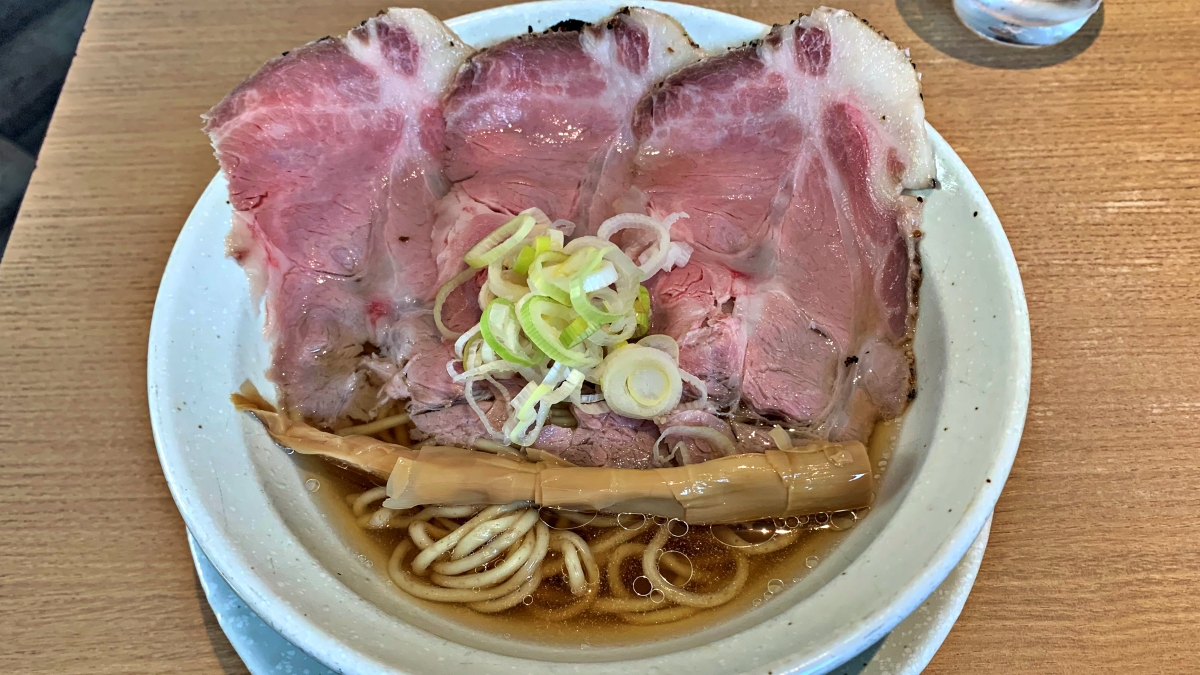language:Japanese
On the south side of the NHK Kyoto Broadcasting Station in Karasuma Oike, Kyoto, there is a small but stylish ramen restaurant called “Menya Yukou.”
Menya Yukou, which has an exterior and inside reminiscent of a cafe, is a popular restaurant that always has a long line of people. In 2018, Menya Yuko opened a sister restaurant in Kyoto’s ramen hotspot, Menya Kiyo. It’s a ramen shop.
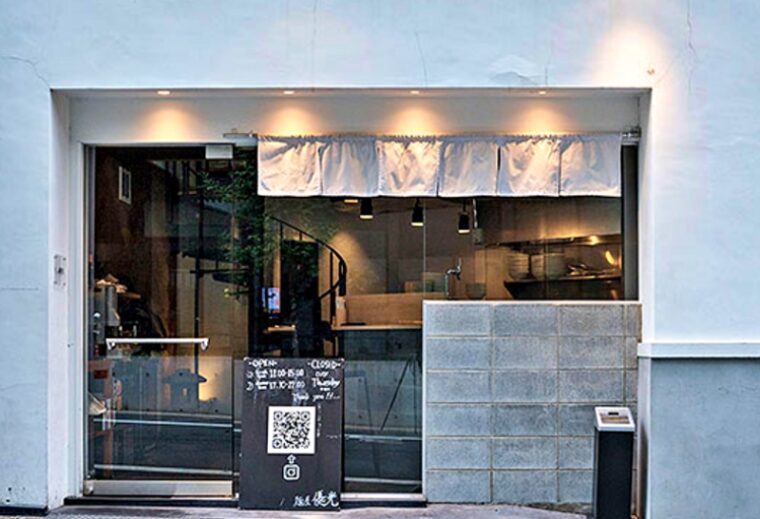
Inside the store, there are counter seats on the first floor, and table seats and counter seats on the second floor, which is accessed by a spiral staircase. It’s a small shop, but the interior design is like a cafe bar.

The ramen at Menya Yukou is a soy sauce ramen with a clear soup similar to Chinese noodles, but because they are particular about the dashi stock and soy sauce, it is a new genre of ramen that is light yet rich. I think so.
There are only three types of ramen on the menu: Hachiku, Madake, and Kurochiku. Perhaps they are so confident in the taste that they do not provide any of the standard condiments at ramen restaurants, such as pepper or chili pepper, on the tables.
This time, I ate three types of ramen with my kids, so I would like to introduce the differences between each one.
By the way, the noodles and toppings of the three types of ramen are the same, the only difference being the soup, but the toppings are also unique and can only be eaten at Yukou.
Ramen Hachiku
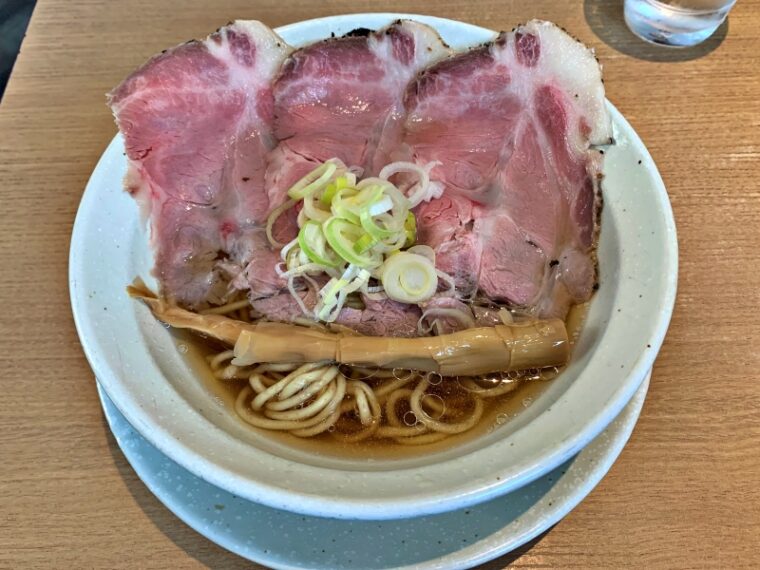
Hachiku is a new type of soup that is light yet extremely umami, blending several types of soy sauce with soup stock made from “oysters,” “clams,” and ” “corbicula clams.”
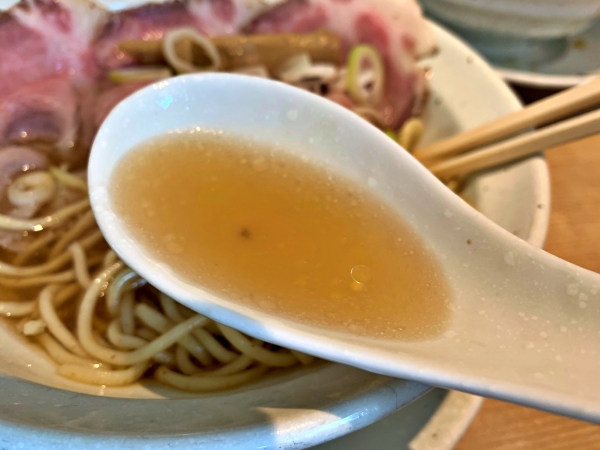
Ramen Madake
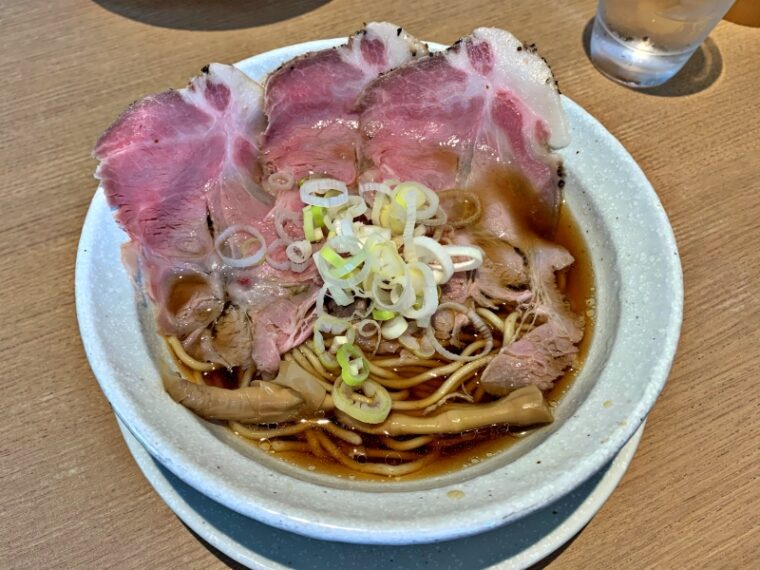
Madake is a Kyoto-style soup based on kelp stock and made with soy sauce from Kyoto, making it a rich soy sauce ramen similar to a clear soup.
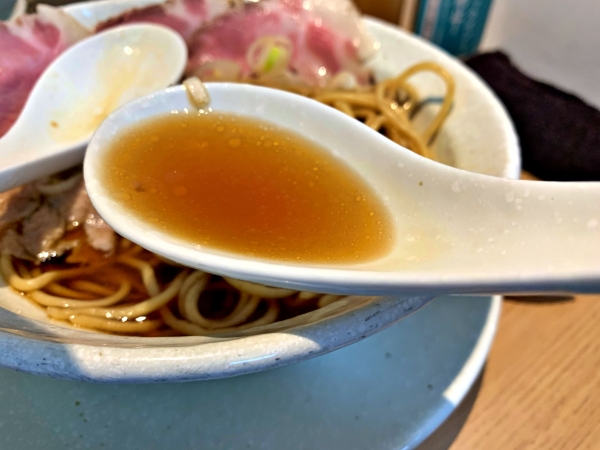
Ramen Kurochiku
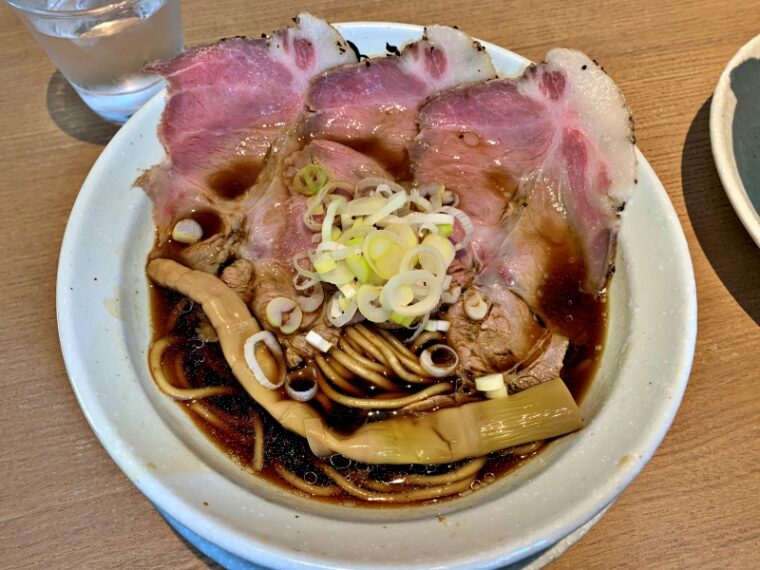
Kurochiku is a soy sauce ramen that is characterized by its rich flavor and a well-balanced combination of bitterness, sweetness, and sourness, and its soup is made with a focus on “hon kaeshi”, which is like an adaptation of “japanese soba tsuyu” (soba soup).
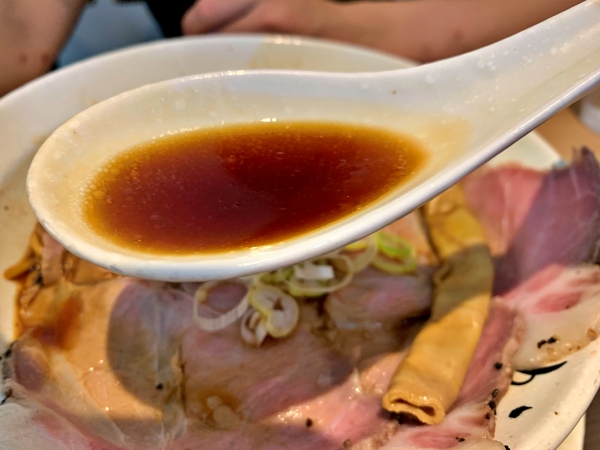
Noodle common to all dishes
The noodles are medium-thick noodles made from whole grain flour and are chewy and chewy. Rather than being mixed with the soup, the noodles themselves have a strong flavor and go down smoothly, so you can enjoy the taste of the noodles themselves. If you like noodles, I highly recommend you give it a try.
Char siu common to all dishes

The grilled pork, which resembles raw ham and which I have never seen at other restaurants, It has a smoky aroma and an exquisite saltiness. It looks like it could be used in a salad or as a snack with alcohol.
It was so delicious that I asked the staff how it was made, but they wouldn’t tell me as it was a trade secret.
Menma common to all dishes
The menma used in Yukou’s ramen is a whole boiled bamboo shoot (Mosouchiku), which is also an ingredient you won’t find in other restaurants. This is also soft and stewed, and the texture of just the right amount of hardness is a very nice accent.
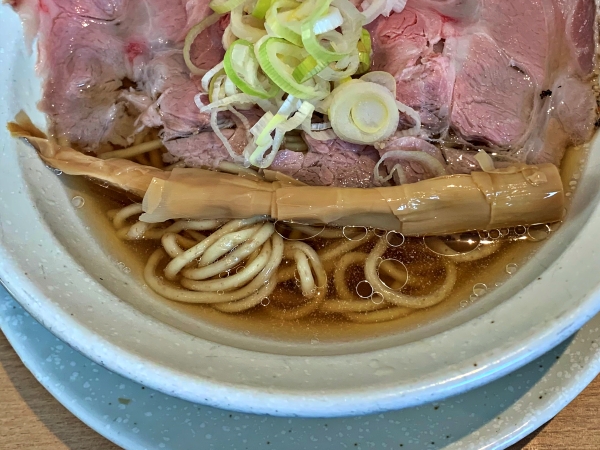
In conclusions
Menya Yukou differs from other ramen shops in that it has a light but flavorful Kyoto-style soup stock, which seems to be very popular among women, but it is also a ramen that is recommended to the elderly.
It is also unique in that it uses ingredients that you won’t see at other shops, but I think it is a well-balanced and well-finished soy sauce ramen overall.
Each ramen is delicious with its own characteristics, but for me who loves shellfish, the best was the “Hachiku,” which reminded me of steamed clams in sake. At the same time, I was surprised by the novelty of the smoked ham-like grilled pork and menma, which are made with whole bamboo shoots, and how the noodles themselves had a strong flavor.

